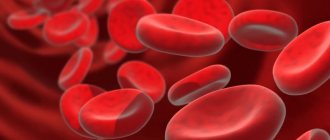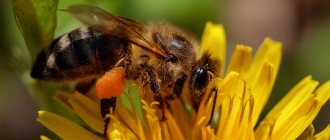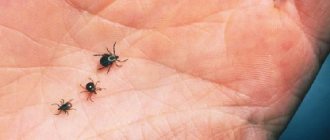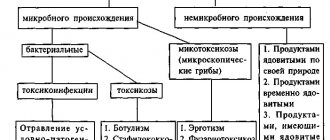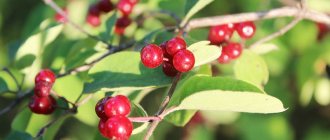Where do snakes live and how to determine if they are poisonous
Snakes are found almost everywhere.
They are not found only in Antarctica, Ireland, New Zealand, and some small islands of the Pacific and Atlantic oceans, where they did not swim. Therefore, an encounter with a snake is likely almost anywhere on the planet. A significant portion of snakes are poisonous. No matter what country in the world you are in, you can determine whether the snake in front of you is poisonous or not, based on several signs,” explained Igor Doronin, Candidate of Biological Sciences, senior researcher at the Zoological Institute of the Russian Academy of Sciences.
Signs of a poisonous snake:
- wide triangular head;
- bright, eye-catching color and body pattern:
- in vipers - zigzag along the ridge;
- the viper has a chess pattern;
- the coral adder has rings of red, yellow, black, yellow colors,
- the cobra has transverse dark stripes and a pattern on the “hood”.
This is how poisonous snakes stand out against the background of the violence of the surrounding world.
3. heat-sensitive (infrared) pits between the nostrils and eyes. They help snakes recognize prey;
4. rattle on the tail. Poisonous vipers and non-venomous pythons and boas have them;
5. vertical pupils. Characteristic of most venomous snakes, but there are exceptions: for example, the black mamba and cobra.
#REMEMBER
A hot climate is optimal for snakes.
Therefore, in exotic countries the number of snake species is in the dozens. Many species of venomous snakes here differ little in appearance from non-venomous ones. You may come across a snake with a faded color, with a flattened head and round pupils, and mistake it for non-venomous, but in fact it will turn out to be deadly. It is difficult for a tourist who finds himself in a tropical country to determine without a specialist whether the snake in front of him is poisonous or not. Therefore, in hot countries, you should especially not touch the creeping ones. An interesting nuance: non-venomous snakes, for example, snakes, when meeting a person, imitate poisonous snakes.
They expand their head and body, begin to hiss loudly, and make menacing attacks. This often misleads people.
Tarantula
The tarantula lives in steppe and desert areas and hunts at night. The idea of the tarantula as a deadly arthropod is greatly exaggerated. The bite of this type of spider extremely rarely leads to the death of a person and only with the development of a severe allergy in the form of anaphylactic shock. A tarantula can bite a person, but it can also defend itself in another way - by shedding thin hairs that stick into the skin:
| Tarantula bite | Tarantula hairs getting into your skin or eyes |
| Pain, burning, local swelling with reddish edges, which without appropriate treatment can burst with the formation of ulcers, headaches, general weakness | Pseudo-anaphylactic reaction: urticaria, angioedema, bronchospasm, drop in pressure |
How to prevent an encounter with a snake
Contrary to popular myth, snakes are not deaf.
The plot of the Sherlock Holmes story “The Speckled Band,” in which the killer attracted a snake to a girl with music, is also not true. In fact, snakes do not hear music, but they hear high tones and feel vibration, ” emphasized Igor Doronin.
- When you walk through the forest, make noise, stomp, sing - in a word, warn the world around you that a person is walking. This can save you from unnecessary encounters not only with snakes, but also with other predators.
- Choose closed clothing and shoes for hiking.
- Stay overnight only in designated camping areas and remember to close your tent: when the temperature drops at night, snakes seek warmth.
- In the morning, when you put on your shoes, check to see if the snake has warmed up in your shoe. Travelers often tell stories of waking up with a snake in their tent. Snake sense organs allow you to capture human warmth. And when a snake sticks out its tongue, it takes samples of air, water, soil, then returns this tongue to its mouth, where special receptors analyze the information received. This is how the animal tracks prey by smell and chemical trail.
- When visiting nature reserves and national parks, we recommend using the services of guides. They have extensive experience in hiking, are often professional naturalists and will be able to warn of danger or quickly identify the type of snake that has bitten a tourist.
- Be careful: watch your step, do not grab branches and vines (they may turn out to be snakes), do not throw stones at snakes.
- Don't take selfies with snakes or photograph them from close range. There are snakes that can jump (for example, the common copperhead).
Common Cottonmouth or Pallas's Cottonmouth (lat. - Gloydius halys).
There have been many accidents where tourists have seen a snake and tried to take a selfie.
Our “northern” snakes are inactive and move slowly during cold weather and bad weather. And in tropical countries, where it is summer all year round, snakes have a very quick reaction, lightning-fast strike, and high speed of movement. Not all snakes inject venom when they bite; some shoot it from a distance, aiming for the eyes. A photo with a snake may be your last, warns Igor Doronin.
Yellow Tummy is also a legless lizard
In the Volga steppes, Stavropol region, Kalmykia, Dagestan and Crimea, there is a meter-long yellowbell (less often up to 1.5 m). This legless lizard is incredibly fast. She is always in motion: she bends, curls into rings, explores everything with her tongue.
The legless lizard spends most of the day in the sun. Only extreme heat can make it crawl into bushes or hide under rocks. The yellow belly can also wait out the heat in shallow water. He avoids deep water because... swims poorly.
It’s hard to believe, but this harmless, lovely lady feasts on grapes and other sweet fruits. Its favorite habitats are gardens and vineyards. The yellow belly also feels quite good in terrariums, quickly getting used to captivity.
The harmless yellow belly has many enemies. It can be bitten by dogs, foxes, or crushed by car wheels. Small snakes are attacked by birds of prey and even hedgehogs.
Terrible for insects, small reptiles and even small mammals, the yellowbell is completely safe for larger animals. The only means of defense it uses against humans is its anus, which makes it similar to an ordinary snake. When he is grabbed, he wriggles his apparently very hard body so deftly that he always manages to spray a person from head to toe with his terribly smelly droppings. However, he is content with this, since, for a completely incomprehensible reason, he never uses his very strong teeth against a person. (A. Bram “Animal Life, Volume III)
Yellow Tummy. Photo source: Wikipedia
What to do if you meet a snake and it bites you
You need to take a few steps away as quickly and quietly as possible, without making sudden movements or attracting her attention.
The viper rushes at the offender if she is hurt. For example, they attacked: here everyone will rush to their defense. Until this moment, the snake will lie and hiss quite loudly. She has no reason to waste her poison. Firstly, it takes a relatively long time to be produced in the glands. Secondly, the snake understands perfectly well that it cannot eat such large prey, so there is no point in wasting poison on it. But they love to hiss and warn about themselves. And there, as they say: “I warned you,” Maxim Ryzhov, Candidate of Biological Sciences, author of the project “Herpetofauna of the Volga Basin” shared his experience.
The snake usually bites people when defending itself from them.
If you suddenly notice a crawling snake, freeze and give it the opportunity to leave. If the snake assumes a threatening pose, back away slowly. Avoid sudden movements that frighten the snake! You cannot move your hands in front of the snake, nor turn your back to it. Don't run away from a snake you meet - you might step on another one you didn't notice. Stay calm in your decisions, actions, and gestures, ” Ekaterina Danileiko, chief doctor of emergency veterinary care in St. Petersburg and the Leningrad Region “Veterinarian at Home,” told us.
It is important to understand which snake bit you - poisonous or not.
You have been bitten by a poisonous snake if:
- on the body, in addition to scratches in 2 rows, 2 dots were found on the sides - these are traces of fangs;
- your skin has become pale and swollen, your blood pressure has increased and your temperature has risen. In this case, breathing is also often difficult, vomiting and muscle weakness appear.
What to do if bitten by a snake:
- Medical assistance should be provided as quickly as possible. Snake venom affects humans in different ways. In this case, insurance increases the chances of survival and health. The hotline will tell you what to do and where to go. The hospital will provide assistance faster and more efficiently. And your wallet won’t be left empty.
- Try to photograph the snake. It will be easier for the doctor to help you if you can show him a picture or at least tell him what the animal looked like: in these cases, the antidote will be selected quickly and immediately correctly.
#LIFEHACK
Many countries have snake catching services.
So, in India you can call +91-96-9696-9696 or contact specialists through the website.
In Thailand - call 1800 225 226 or via the website.
Before the ambulance arrives or a visit to the hospital, you must:
- immediately remove all jewelry so that it does not put pressure on the swollen part of the body and does not impede blood circulation;
- inspect the skin: if some of the poison remains outside, carefully remove it with an antiseptic, napkin or water so that it does not get on damaged skin;
- drink plenty of fluids - water, tea, broth - to flush out toxins from the body as much as possible;
- if possible, do not move or worry so that the poison does not spread throughout the body - the stronger the heartbeat, the faster the poison spreads;
- ensure immobility of the injured limb;
- take an antihistamine; sedatives and cardiac medications are also not contraindicated.
What is not recommended to do:
- cut the bite site crosswise or cut out the affected area. Cuts from random objects lead to infections, damage to veins, blood vessels, and tendons;
- cauterize the wound with hot objects, coals from a fire, or gunpowder. It won't help. The poisonous teeth of snakes reach a centimeter in length, so the poison penetrates deeply into the muscle tissue;
- apply a tourniquet above the bite site. Applying a tourniquet to the affected limb worsens the condition of the victim, provokes gangrenous phenomena and increases the risk of death, since the tourniquet causes blood stagnation and even tissue necrosis, but does not delay the spread of poison;
- take alcohol, which enhances the effect of the poison and makes it difficult to remove it from the body.
Black Widow
The phrase black widow is the second name of the female karakurt, since after mating she devours the male. This black spider is deadly to humans, and symptoms develop only after a few hours. When biting, a black widow brings discomfort to a person in the form of pain, but the wound itself is almost invisible on the skin.
Symptoms of a bite develop after 1-2 hours, subside within 1-3 days:
- Pain and erythema at the site of the bite;
- Excitement, anxiety;
- Headache and dizziness;
- Sweating;
- Nausea and vomiting;
- Hypertension;
- Increased salivation;
- Erythematous rash, itching;
- Ptosis;
- Swelling of the extremities;
- Muscle spasms, cramps;
- Cramping pain in the abdomen.
Paresthesia, seizures, weakness and restlessness may persist for several weeks.
Fatalities are rare; children, the elderly and patients with chronic diseases are at risk. The most dangerous outcome is the development of DIC syndrome: disseminated intravascular coagulation of platelets, which quickly leads to death.
About unconventional detoxification methods
Igor Doronin is sure:
If a tourist is bitten by a snake, he should not go to the local shaman. In most cultures, all detoxification measures primarily involve burning off the bite. But this is nonsense. Snake venom is saliva that contains toxic proteins. The snake's venom is destroyed at very high temperatures. It has the same protein structure as the human body. To destroy it, you need to destroy your proteins. In Central Asia, the bitten limb is wrapped in the freshly dressed skin of a killed lamb. In the travel notes of one snake catcher, I read about how he met a boy with a terrible laceration in the village. It turns out that a local healer, most of whom cannot even distinguish a poisonous snake from a non-poisonous one, gnawed out a piece of meat from him. In general, I would not use folk traditions in this case, but would rather call an ambulance or go to the nearest hospital.
Candidate of Biological Sciences Maxim Ryzhov also speaks, not without irony, on the topic of folk recipes in the fight against snake venom:
I don’t know how it is in other countries with traditional methods of treatment, but a couple of years ago I came across Alexander Aksenov’s book “The Complete Encyclopedia of a Healer.” It said that after a bite, you need to chop up fresh blue cyanosis grass and apply it to the bite site. What kind of grass this is, I don’t know. They also sent me a scanned page from the “Instructions for first aid in case of accidents at work” issued under the auspices of RAO UES of Russia. It was written there that a frog’s belly should be applied to the wound from a viper bite or a special Koletex bandage should be applied.
#REMEMBER
You cannot cauterize the wound with caustic potassium, nitric, sulfuric and carbolic acids or kerosene, as is sometimes advised. Another common myth is that you have to urinate if you get a snakebite. Urine is not capable of neutralizing toxins, but precious time in such a situation can be spent on the procedure itself.
Cross spider and black house spider
- Cross spiders are the most common type of spider in our area. They weave their webs near a person’s home and even inside the house. Reach sizes up to 1-2 cm.
- The black house spider is smaller in size and lives both inside and outside the home.
A person is bitten only when they fall into his hands, and then only if they try to hold the spider. House spider bites do not pose a mortal danger. Epeirotoxin, the main component of the poison, can lead to cold-like symptoms - aching joints, weakness and headache, which lasts for about a day. A slight swelling forms at the site of the bite.
Why are snakes dangerous in exotic countries?
The further south the country, the more species of poisonous snakes there are. There are especially many snakes in Southeast Asia, the Amazon, Central Africa and South Australia. Bites are recorded every year, especially often in tropical countries, since the diversity of snakes there is very high. The fauna of the tropics as a whole is so diverse that it can be called the planet’s storehouse.
#IMPORTANT
The greatest danger to humans here are aspid snakes, which have a completely different venom compared to the same vipers.
In vipers, venom belongs to the group of hemotoxins, that is, toxins that destroy the functioning of the circulatory system.
The victim simply does not receive oxygen. Hemotoxins are easier to remove from the body. In slate snakes, the venom is more dangerous; it belongs to the group of neurotoxins: it paralyzes the nerve center in the brain and nerve connections in the body. Often the victim dies from respiratory paralysis or cardiac arrest. Therefore, from the bites of some black mamba or taipan, a person can die within an hour, ” explained Igor Doronin.
An example of an asp is the Harlequin Coral Asp.
Animals, unlike many people, try to avoid snakes. Thus, Indian elephants avoid the king cobra, the largest venomous snake in the world. It reaches five meters in length. Its venom is incredibly toxic. It is believed that if bitten in the trunk, an elephant can die. A person can die from a cobra bite in 15 minutes. Meanwhile, different types of cobras can be found in Africa, Central Asia (Uzbekistan or Turkmenistan), and Southeast Asia. There they are not only widespread, but also very diversely represented - 28 species.
King Cobra.
Consequences
The consequences of a poisonous snake bite for the human body depend on the composition and properties of the components of the poison found in the body.
The main components of the poison are enzymes that break down various types of tissue (hyaluronidase, phosphokinase, proteases), and toxic amino acids, proteins and carbohydrates.
Hyaluronidase - disconnects connective tissue, destroys the walls of small capillaries, increases tissue permeability to water and ions. Phosphokinase – splitting the lipid layer of red blood cells leads to their destruction.
The designated elements thin the membranes of cells containing bioactive substances (histamine, heparin, etc.), which inevitably contributes to their release and the manifestation of inflammatory and allergic reactions (swelling, redness, pain, itching).
We recommend reading:
Stages of registering real estate in Turkey
Snake venom is carried throughout the body by lymph. Its components negatively affect the walls of blood vessels, destroying them and forming blood clots, as a result of which blood circulation and water-lipid balance are disrupted.
What does a snake bite look like?
How dangerous are sea snakes?
Some of the most poisonous snakes are sea snakes. But they are almost not dangerous for us, this is due to the structure of their mouths and peaceful disposition: they do not attack a person without a good reason.
In order for a sea snake to bite you, you need to stick your finger halfway straight into its mouth!
But their poison is extremely toxic, since the main food is fish, which is quickly carried away by the current. This means that the snake needs to kill it faster than warm-blooded animals. Many tropical fish are much more dangerous than sea snakes: stingrays, scorpionfish, zebra fish. Octopuses off the coast of Australia and cone clams are poisonous. But you shouldn’t be afraid of sea snakes, but you shouldn’t grab them either, ” explained Igor Doronin.
One of the varieties of sea snakes.
How insurance will work in case of a snakebite
In most cases, death from a snakebite occurs when a person does not have time to get to the hospital and does not receive the antidote in time.
#REMEMBER
It is more likely for someone who is well versed in the area, equipped with a map and knows where the nearest hospitals are to remain alive and healthy after an accident.
It is difficult to overestimate the importance of travel insurance for a person who has encountered a snake. All you need to do is call the insurance company and the call center operator will tell you where to go, and the doctor will see you without waiting in line. Most insurance companies include medical assistance for snakebites as part of their standard package. Bites are usually equated with injuries. Some companies also classify exposure to snake venom after a bite as an allergic reaction. Some insurance companies reimburse the costs not only for first aid, but also for subsequent services.
Let’s look at the examples of market leaders to see what opportunities the policies of specific companies provide:
- ERGO: medical expenses for animal bites (in particular snake bites) are covered by the company's standard insurance. Exposure to snake venom after a bite is considered an allergic reaction, which is an exception to insurance coverage. If a person’s life is in danger, he will be taken to the hospital and given emergency medical care, but further treatment will not be covered by insurance.
- AlphaInsurance: animal bites are considered an injury and are covered as part of medical expenses.
- Gayde: according to a company representative, their insurance has not yet had any refusals for animal or insect bites. Insurance covers all treatment costs.
- Absolute Insurance: Standard insurance covers bites. If vaccination is required after bites, then the costs for this will also be reimbursed.
- Liberty Insurance: snake bite is an insured event, it is qualified as an injury, the victim is entitled to one visit to the doctor and two bandages.
- Ingosstrakh: the client can count on first aid for a bite and treatment of the wound. Vaccination is possible only if the additional option “Vaccination” is included in the insurance.
- ERV, VTB Insurance and VSK: the standard policy covers the costs of first aid for a bite, and all necessary subsequent procedures and services.
When drawing up a contract with an insurance company, you should pay attention to these details.
You can meet a snake anywhere in the world. It doesn't matter whether you go on a trip around the world or go for a walk in the nearest forest. But there is a country that has the highest mortality rate from snake bites year after year. This is India. Surprisingly, it is in India that creeping creatures are revered and cared for. In honor of these animals, legends are made there, temples and monuments are built. A Hindu will not kill a snake, even if it crawled into his house. Moreover: it will allow her to leave alive and unharmed. After all, anyone who knows snakes well understands that the best method of protection from this predator is not an attack, but respect for its peace.
Author: Irina Koretskaya
Treatment
There is a specific antidote for snake bites - a medicinal serum obtained by hyperimmunizing horses. Each type of snake has its own serum. In Russia you can buy a serum against the venom of the common viper, sand viper and viper. It should be noted that a doctor should use the serum, since, being a biological product, it can cause allergic reactions, including anaphylactic shock.
In addition to administering an antidote serum, treatment of a snake bite is carried out symptomatically. It is necessary to drink plenty of fluids to speed up the elimination of poison by the kidneys. To prevent allergic reactions, take the tablet “Suprastin”, “Diphenhydramine” or another antihistamine. If necessary, the doctor prescribes cardiac support and painkillers.
